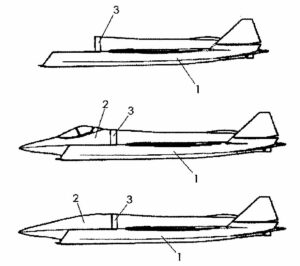In October 2023, in an interview with the press service of the United Aircraft Corporation, Mikhail Strelets, Deputy Managing Director – Director of Sukhoi Design Bureau, spoke about possible changes to the concept of multirole combat aircraft. He noted that operational-tactical aviation fighters will develop towards specialisation. Instead of one multifunctional platform, as at present, there will be several specialised platforms, each of which will solve a certain range of tasks. This approach will reduce both the cost of development and the timeframe for its implementation.
The division of tasks between specialised platforms will not only reduce the cost of developing each platform, but also increase their effectiveness in carrying out specific missions. Moreover, this approach will allow for faster introduction of new technologies and modernisation of individual components of each platform without affecting the entire system. But while this approach has obvious advantages, it also has disadvantages. One of them is that a wide fleet of aircraft for various purposes requires large material and human costs. To compensate for them, it is necessary to provide in one aircraft the possibility of making changes for different tasks.
On 16 November 2023, the Federal Service for Intellectual Property granted the United Aircraft Corporation a patent RU 2807558 for a modular single-engine low-observable aircraft. Sukhoi Design Bureau’s inventor group is headed by its general director, Mikhail Strelets. The group also includes Alexei Bulatov, deputy chief designer of the Checkmate project. The designers’ task was to develop a universal platform that would allow to radically change the functionality of the entire aviation complex while keeping the transport capabilities of the aircraft at the same level.

The Sukhoi Design Bureau’s development allows the basic part of the aircraft to be used as a basis for creating aircraft with various modifications, which can be achieved by replacing the part of the aircraft most loaded with onboard equipment – the fuselage head section. Earlier it was stated that the concept of the Checkmate LTS is to provide the customer with an opportunity to configure the aircraft for their own tasks. The invention represents Sukhoi Design Bureau’s vision of what a full-fledged supersonic fighter of the fifth generation in the light class should be – modularity. This vision has now been patented.
The proposed aircraft consists of a base part and at least two interchangeable fuselage head parts. The base part contains all the main flight support systems of the aircraft, while fully retaining the armament compartments incorporated in the design. In front of the base part there is a transition zone, where all the attachment units of the replacement head unit are located, as well as connectors and fittings of electrical, hydraulic and other systems to connect the modules with the base part.
Interchangeable head units can carry different functionalities and different contents. It can be a single-seat crew cabin of a manned aircraft, a two-seat crew cabin, or the head end of an unmanned aircraft. Thus, the modules can make changes in the functionality and purpose of the aircraft. This will allow to realise the assembly at the serial plant of aircrafts in the design intended for certain tasks with preservation of the unified central and tail parts of the airframe: preservation of the air channel, armament compartments, fuel tanks, wing, plumage and preservation of the structural and power scheme.
By removing the cockpit, which are not required for reconnaissance missions, and installing the head part of the unmanned aerial vehicle, savings can be obtained by increasing the flight time due to the reduced weight of the aircraft itself. The detachable module, depending on the flight task and conditions of use, will maximise the efficiency of use of the aircraft and expand the range of tasks to be performed by the operator at a given time.



